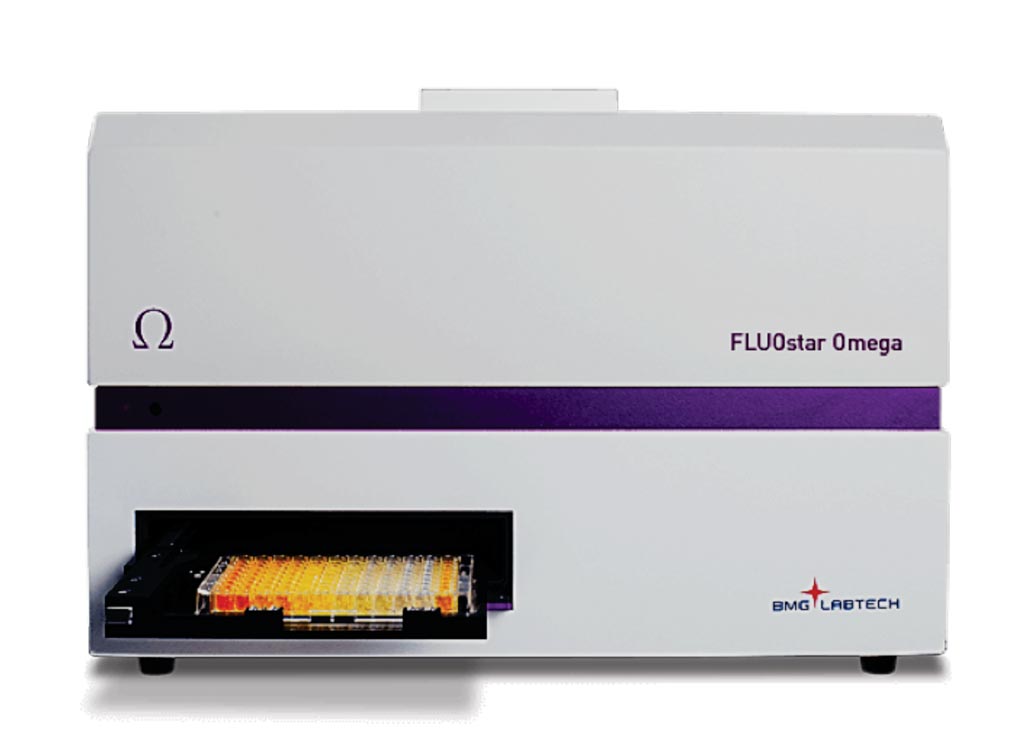Molecular Test Adapted for Parkinson’s and DLB
By LabMedica International staff writers
Posted on 21 Feb 2018
Parkinson’s disease (PD), multiple system atrophy (MSA), dementia with Lewy bodies (DLB) (or Lewy body dementia) are called α-synucleinopathies due to the abnormal accumulation of aggregates of a protein called α-synuclein (αSyn) in the brain.Posted on 21 Feb 2018
Many neurodegenerative diseases are related to the accumulation of specific misfolded proteins. These deposits are identified upon post-mortem analysis of brain tissue, allowing definite diagnoses to be made based on specific neuropathological and molecular findings.

Image: The FLUOstar Omega multi-mode microplate reader with six detection modes (Photo courtesy of BMG Labtech).
A team of scientists led by those at the National Institutes of Health (Hamilton, MT, USA) tested 60 cerebral spinal fluid (CSF) samples, including 12 from people with Parkinson's disease, 17 from people with dementia with Lewy bodies, and 31 controls, including 16 of whom had Alzheimer's disease. A sample was sent for analysis of cell count, total protein and glucose to a local laboratory. Autopsy brain analysis was performed with formalin-fixed left hemibrain is serially sectioned in 1 cm slices and tissue blocks and processed for histopathological examination by H&E, and Thioflavin-S (Thio-S) to detect tau and β-amyloid deposits. Lewy body pathology is evaluated using phosphorylated α-synuclein immunoreactivity with a mouse monoclonal antibody.
The team used an improved α-synuclein real time quaking-induced conversion (αSyn RT-QuIC) assay that has similar sensitivity and specificity to prior assays, but can be performed in 1 to 2 days with quantitation. RT-QuIC reactions were performed in black 96-well plates with a clear bottom. After processing the plates were then sealed with a plate sealer film and incubated at 42 °C in a BMG FLUOstar Omega plate reader with cycles of 1 minute shaking (400 rpm double orbital) and 1 minute rest throughout the indicated incubation time.
Blinded analysis of cerebrospinal fluid from 29 synucleinopathy cases (12 Parkinson’s and 17 dementia with Lewy bodies) and 31 non-synucleinopathy controls, including 16 Alzheimer’s cases, yielded 93% diagnostic sensitivity and 100% specificity for this test so far. End-point dilution analyses allowed quantitation of relative amounts of pathogenic disease-associated forms of α-synuclein (αSynD) seeding activity in cerebrospinal fluid samples, and detection in as little as 0.2 μL.
These results confirm that αSynD seeding activity is present in cerebrospinal fluid. The team also demonstrated that it can be rapidly detected, and quantitated, even in early symptomatic stages of synucleinopathy. The study was published on February 9, 2018, in the journal Acta Neuropathologica Communications.
Related Links:
National Institutes of Health














